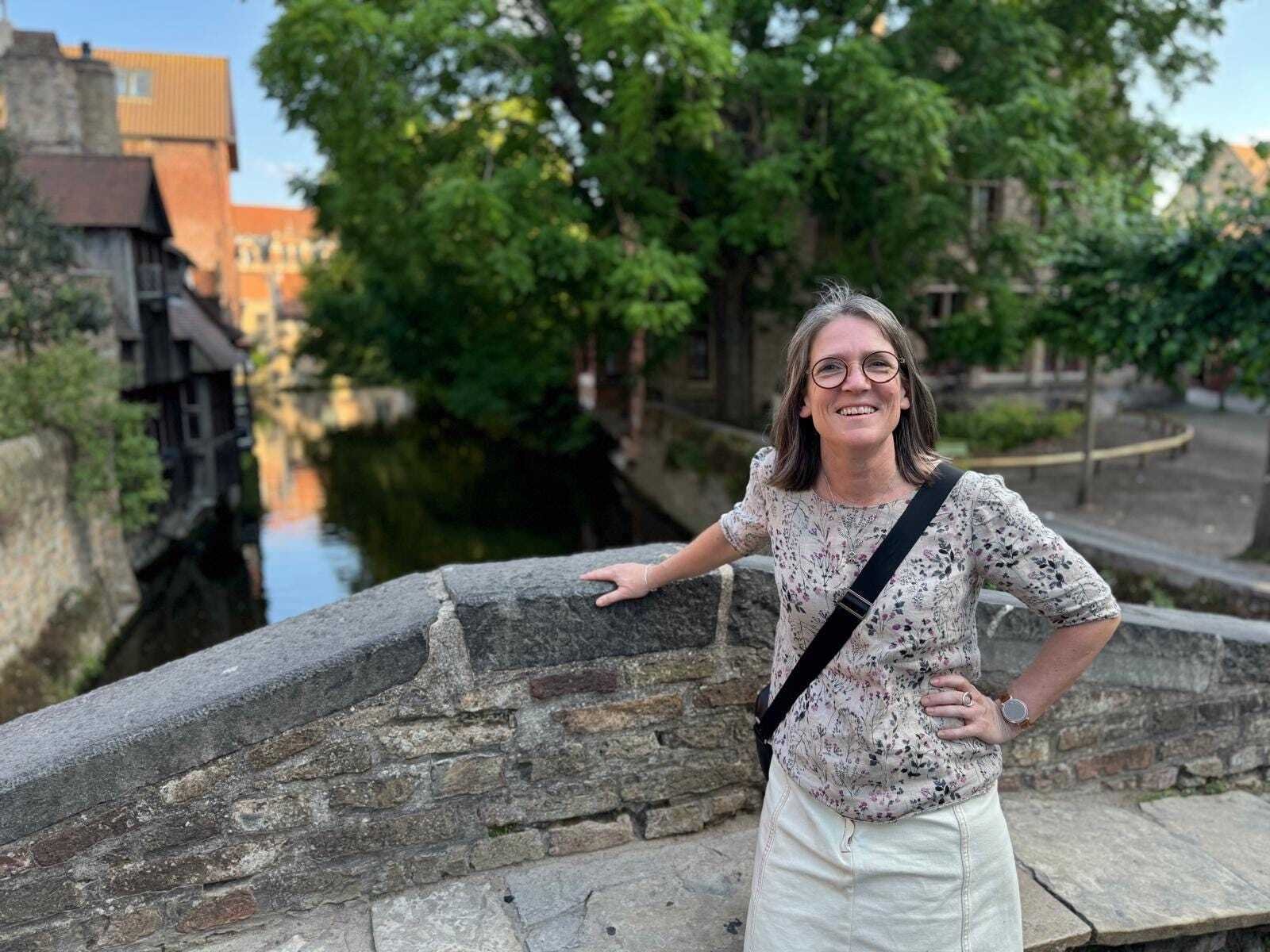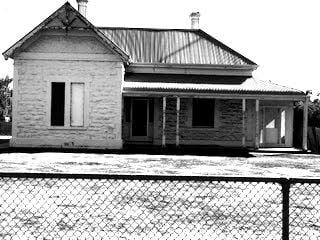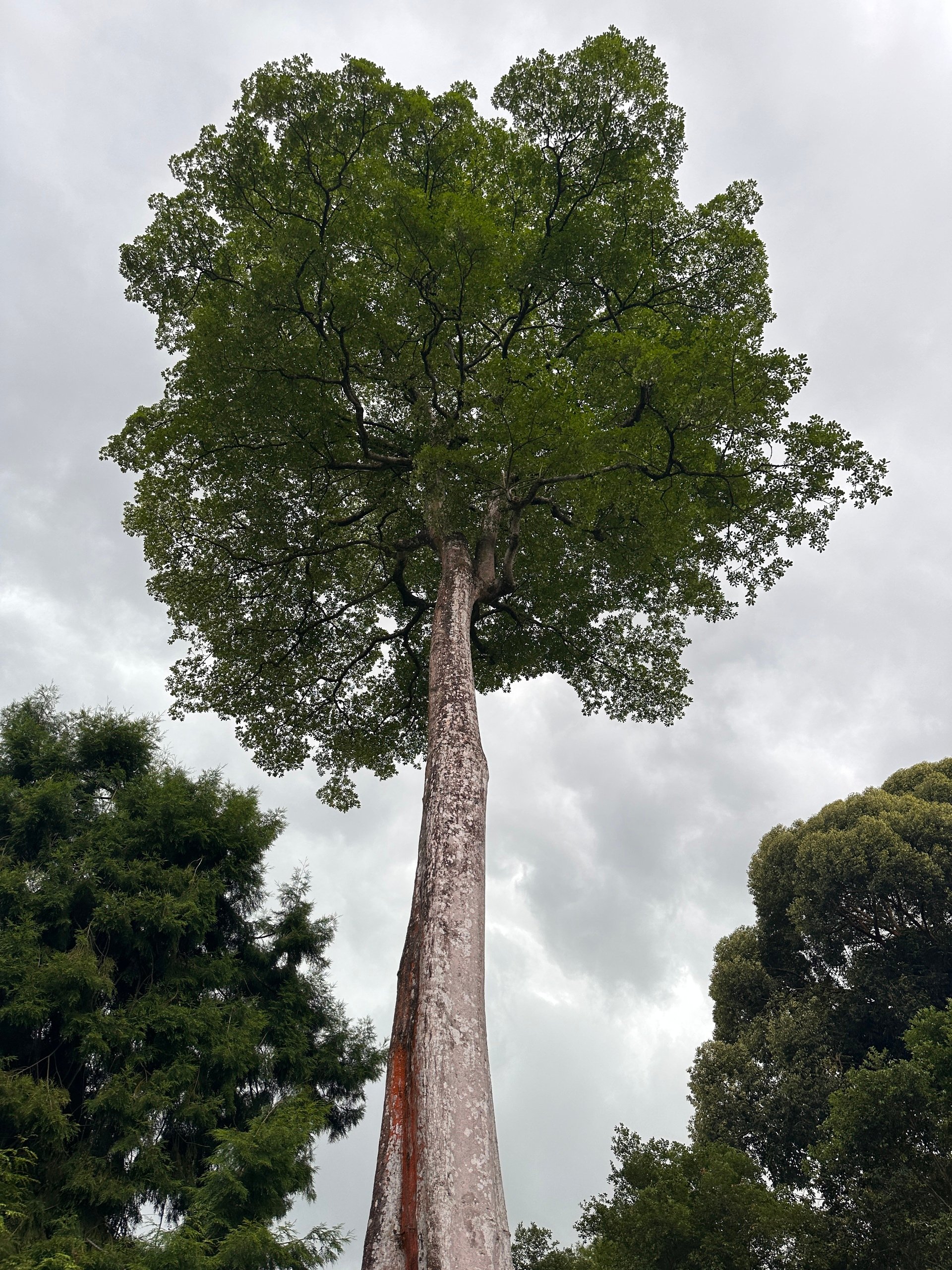My dear friend
I hope this email finds you more in control of your email than I am. Is it just me, or has the spam filter gone into overdrive? All my good stuff is going to spam, and I keep forgetting to check it, and I’m missing lots of nice things. Similarly the filter in my brain is not functioning as well as it might be and so I once again send you a collection of scattered, but connected thoughts.
i
A few years ago, I started having conversations with friends about a renewed sense of excitement and discovery around books and music that I was feeling. I was relishing a return to live music—not only musicians I had long loved (Alison Moyet), but also those whose work had passed me by (Ed Kuepper). I was loving the chance to hear artists reinterpret their early work or share their new directions. It felt to me almost as magical as the times of adolescent discovery. Those heady, unsettling days when new emotions were experienced; new thoughts grown; new crushes sparked. ‘Isn’t it amazing?’ I said to anyone who would listen, ‘This unexpected bonus of growing older?’
I was inspired. I was also relieved to think that it might not be too late to make something of all these words and thoughts that I’ve had in my mind for all these years, but that are only now starting to make sense.
My conversational enthusiasm began to wane because too often the people I was talking to would look at me blankly, or worse, would argue (insist) that nothing could equal the discovery of music and literature in your late teens and young adulthood. Nothing would rival the excitement of hearing and INXS riff or reading To Kill a Mockingbird for the first time.
As has so often been the way throughout my life, I deferred to other people, thinking they must be right. And if they are right, then I must be wrong. I didn’t stop feeling it, but I did stop talking about it.
ii
My biggest disappointment on my trip to London this year was to miss Celia Paul’s show Colony of Ghosts at Victoria Miro. Characteristically, I had misread something and got this confused with something else, and thought it would be on at the same time I was in London when in fact it finished a month (or more) before I arrived.
I had (have) been obsessed with Celia Paul since my previous trip to London the year before when I bought her memoir Self-Portrait in a gallery bookshop. I had been picking it up and putting it down the whole trip. I take my commitment to 12 kilos of luggage seriously, but I also like books a lot. I know you share this dilemma, I don’t need to explain. But on the last day, I decided I couldn’t put that particular book down again and I brought it home.
I read Self-Portrait when I got back to Australia, in those strange and inky jetlagged days of adjusting not only to changes in time, but also to the shift from summer to winter, from long days to short. The day I finished that book I visited three bookshops to find her next book, Letters to Gwen John. I collected every article about (and by) her I could find; I watched every interview saved to youtube; listened to every podcast on which she appears.
I might have worried that I was being slightly over-interested, but was reassured by this passage from Rachel Cooke’s review in The Guardian: ‘…she is fascinating; I do not feel, at this point, that I could ever tire of her mind, and the unlikely, singular way it turns. I want to know as much about her as I possibly can.’
I was fascinated by Celia Paul’s commitment to her work; her approach to her work; her relationship with her immediate family; her relationship with the Freud family; the complex motivation at the heart of her wish for a child; and of course, her relationship with her one-time lover, and father of her child Lucian Freud (she was an 18-year-old student at The Slade and he was a visiting teacher in his fifties when their relationship began).
It seemed to me that all of these things coalesced into my consuming fascination with her apartment. This apartment is in the heart of Bloomsbury on Great Russell Street and directly opposite the British Museum. Could anything be more quintessentially British artist? Lucian Freud bought her the apartment 40 years ago; and it is here that she lives and works, sleeping in one room and painting in another. She has lived alone in the apartment for all these years, protecting her need for solitude so carefully that even her partner and husband, philosopher Steven Kupfer, did not have a key. Sitters for her portraits (most often her mother or her sister, Kate) sit in the studio in silence while Celia Paul paints.
We can see the centrality of this space to Celia Paul’s work in her paintings: the many glimpses of the British Museum and the BT Tower in paintings; her sitters on the bed or in chairs that have become subjects of their own; her self-portraits rooted firmly here. She talks about the importance of this space often in interviews; it is always discussed in articles and essays written about her; and there are many images in newspapers and magazines of the space in all its glorious austerity.
iii
In the lead-up to this year’s trip (still thinking that I would be there in time to see her Victoria Miro exhibition), I re-listened to a few of the podcasts, including Katy Hessel’s interview with Celia Paul on Great Women Artists. When the conversation takes its inevitable turn towards the apartment, Celia Paul says this about the room she uses as her studio:
So many years of silence is built into that space of people silently sitting for me; and I think this is something that isn’t generally talked about, this quality that painting particularly has in relation to time. All painting is very like a room in that if a painting takes a long time, it’s like a room that has been quietly lived in and there are kind of layers of silence that’s built into the layers of paint; and there is a mysterious quality to these paintings. You know that Rembrandt was a slow painter; you know they took long time. Whereas if a painting takes a short time, it’s like a room that you’ve just moved into, that’s been recently decorated and the echoes are completely different. They still jangle, don’t they? There’s a very different quality to the sound and I think with a painting that’s been done very, very quickly there’s a kind of freshness and it’s obvious which painters work fast and this is why it’s so really impossible to reproduce a painting accurately because it’s the air that comess off the painting that you actually have to stand in front of the painting to experience.
I know that I have listened to this podcast at least once, so I must have heard her say this, but it strikes me now in a way it didn’t before. I suddenly understand the sensation of depth and weight that I feel whenever I step into an art gallery. The power of time washes over me even before I have glanced at a painting.
iv
At the end of this year’s trip, I had a few days in York and then London on my own. I do love London, but I was feeling a little melancholy after Adrian’s earlier departure home compounded by a summer cold I caught in York. On top of that, the accommodation prices were still through the roof, the exchange rate still through the floor.
After several hours of researching my accommodation options for my final nights in London, I found a reasonably-priced place in Bloomsbury. No air conditioning, but based on the reviews, I paid the higher charge to get a room overlooking the garden so I could open the windows at least.
It was hot the day I got back from York and after pulling my suitcase from Euston Station down to the hotel, I was glad for the relief of the hotel foyer’s air-conditioning. The lovely young man gave me my key and wished me a pleasant stay, and I caught the lift up to my room, dragged my suitcase along the corridor (my room wasn’t near the lift—the reviews also warned about this) until I found my room almost at the end of the corridor.
When I opened the door, I was struck by a loud, mechanical noise that immediately made me think with surprise, ‘Oh! Have I got air-conditioning after all?’ But after a minute’s of investigation I found this outside my window:
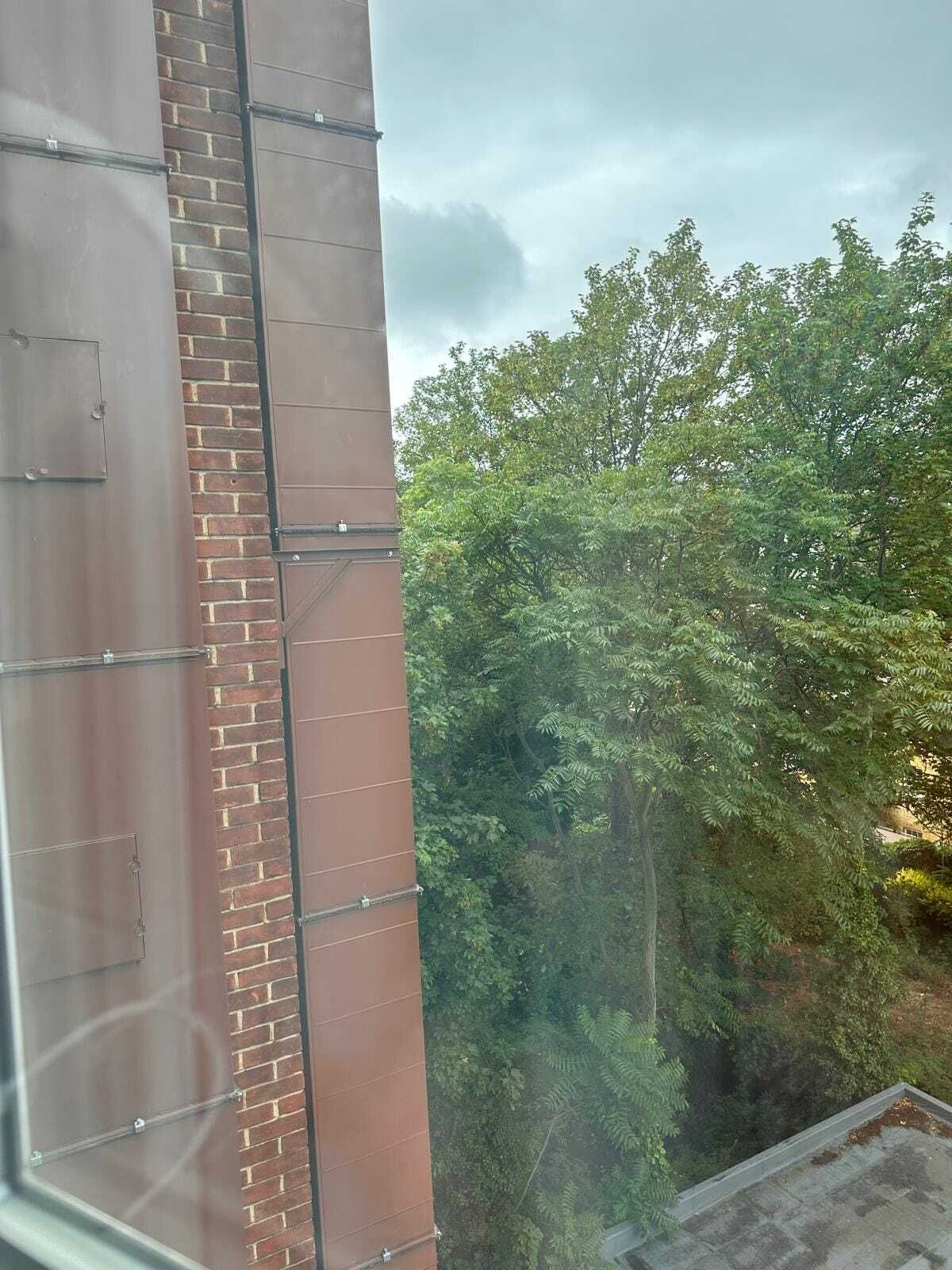
There is indeed a garden, but there’s also a great, gi-normous, stonking extraction fan from the restaurant downstairs. My dear friend, it is LOUD.
I asked the lovely young man at reception about it and he said—in a manner that made me understand I was not the first person to mention it—there was nothing to worry about it, it would stop by 10 pm.
I tried to be unworried by it; and it did go off by ten pm. But when it did, through the paper-thin walls I could hear my neighbour snoring, until the snoring was drowned at 5.30 am when the extractor fan started again.
For two nights I tried to accept this—relish it even—as part of the London experience. It’s all material! When I woke at 4.30 am and the air was cool and the dawn was just breaking I stood wistfully at the open window and watched the neighbourhood fox wander through the gardens. This sweet mix of melancholy and relief would surely be the heart of a poem? When the fan started up I stood at the window again, and watched the LED lights of the BT tower, ‘Good morning, London.’ I romanticised about the novels I’d once read about the young Australian women sailing from Sydney to London becoming secretaries to lecherous bosses and living in bedsits with life-worn landladies. This would surely inspire the new novel I’m desperate to write?
My dear friend, none of my attempts to make lemonade out of this lemon were a success. I was miserable.
v
All of this to say, I walked up and down Great Russell Street on my way to and from the hotel to the tube even more fascinated with Celia Paul and her ability to find internal silence despite the external noise. At this particular stretch of road, I walked as slowly as I could, thinking that perhaps I could absorb the secret of finding internal silence despite the external noise.
The more I think about this apartment, and the more I study her work, the more I marvel at Celia Paul. I wonder at her ability to create a space of such stillness and silence on Great Russell Street across from the British Museum, the most visited site in England. Six million visitors every year; slowly layered by the silence of a single, singular artist.
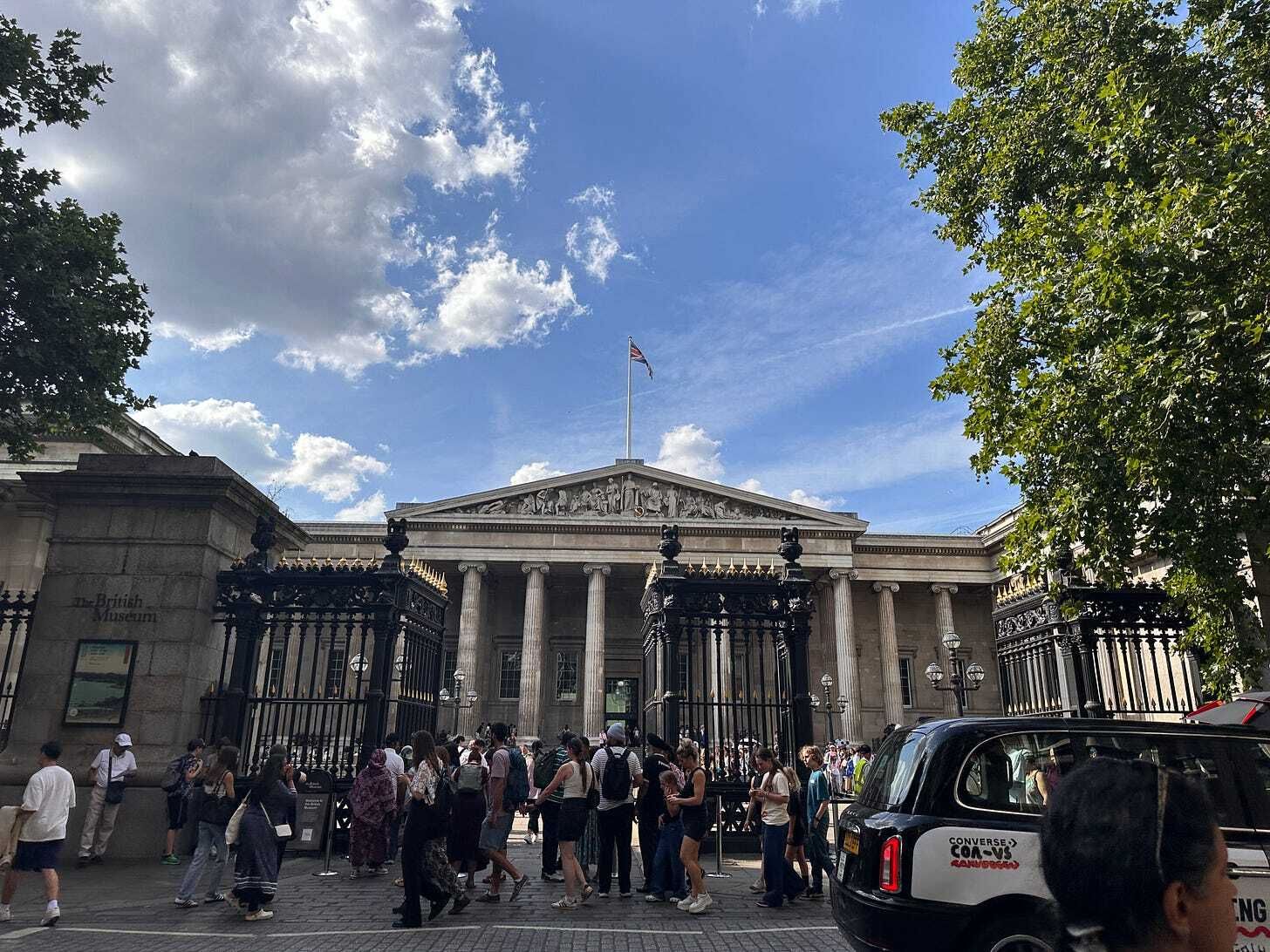
vi
My dear friend, I have so much more to say about Celia Paul and her incredible work. So much more! And even here, I have not said what I wanted to say. When I got home after this trip, I re-read Self-Portrait and Letters to Gwen John during my jet-lagged days. Here is a piece that I had marked the first time I read it. It is Celia Paul quoting from Gwen John’s notebook:
Turn gently towards your work.
Instead of this sudden discouragement and sadness take up in your mind a leaf, a flower, a simple little form and find its form, take it into your possession as it were …
I will stop here, my thoughts are rambling, and it’s time for me to leave the house and go for a walk. I hope that next time I write my thoughts are more focused, my point my clear. We shall see! I will write again next week )or maybe the week after) but until then, I will think of you often and with love,
Your friend
Tracy xx
